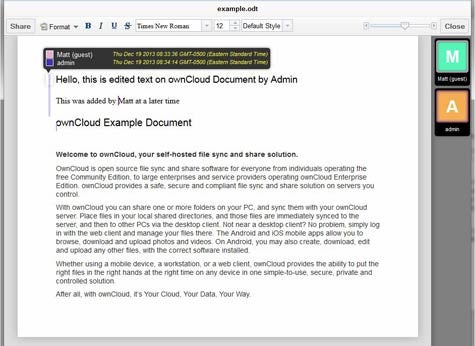One of the most obvious reasons that services such as Dropbox or Box are so popular with end users is that most internal IT organizations simply haven’t had a way to offer that capability. End users were acquiring mobile computing devices by the millions and they simply needed a way to share files.
The truth is most end users and IT professional alike would still prefer it if internal IT organizations could deliver this capability within a broader set of applications without requiring them to invoke a third-party service. In fact, it’s servicing that specific need that led to the formation of the ownCloud open source project, which created a file synchronization and collaboration server that internal IT organizations can deploy on their own.
The latest version of the community edition of ownCloud sports a revamped user interface and the ability to edit documents within a browser and then store them within ownCloud. That latter capability is critical because rather than having to download a document and then fire up an application to edit it, users can now make changes to a document from directly within their browsers.
According to ownCloud project founder and CTO Frank Karlitschek, ownCloud 6 is not only significantly faster, it now includes application programming interfaces (APIs) that make it easier to build applications on top of ownCloud while leveraging a RESTful API to make it easier to share documents. To that end, the latest version of ownCloud 6 includes a software development kit available in either Java or Objective C format.
Longer term, it’s probable that cloud service providers will eventually begin to embed ownCloud directly within applications and services with the cloud. Taken together, IT organizations might soon have the option of not only being able to deliver file synchronization and collaboration service on their own, but also taking advantage of file synchronization and document collaboration services that could be widely distributed across any number of services.
The biggest challenge, of course, would be weaning end users off of commercial file synchronization services. In the meantime, more and more file synchronization services are available these days, so IT organizations have plenty of options. In fact, the only bad decision at this point is to make no decision, because in the absence of leadership from IT, end users have clearly indicated a willingness to make the decision on their own.




